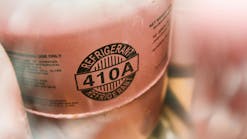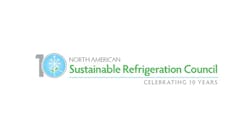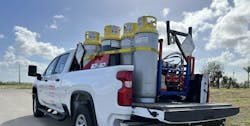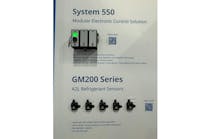As the clock ticks down to 2020, which, for now is the date when HCFC R-22 is no longer available (in fact, some are predicting shortages in supply in 2015), we asked leading refrigeration contractors and supermarket exectives about their preferred replacements. Comments were made during the 2013 “Refrigeration Roundtable” meeting during Comfortech 2013.
Joe Gallego, Bay State Cooling: “I think most supermarket chains are onboard with the fact that 2020 is fast approaching, and R-407A seems to be the replacement refrigerant of choice. We haven’t really had to change expansion valves or tweak the systems much at all, other than adjust suction pressures here and there.”
Richard Luhm, Memphis Mechanical: “We’ve had some customers switch to R-407F early on, and during the learning phase of that period, it had quite a bit of glide to it, but it seemed to work fine. I think the particular program that they obtained the refrigerant by was certainly favorable, because it was free, to do at least three stores’ worth.
“We’ve had some small supermarkets that are challenged financially do some retrofits based on times of need. We’ve done some with MO99, and they worked very well. I’m not sure of the carbon footprint and all of that aspect of it, but as far as operation, the customers are very happy with the way it’s operated.”
Q: If R-22 is on the way out, we have R-407A, R-407F, R-407C and R-427A as man-made options. What of “natural” refrigerants and systems, such as secondary loop cascade systems using carbon dioxide (CO2?)
A: Steve Hagen, Sprouts: “I think the secondaries cost too much and use too much energy. I don’t think that’s going to be a long-term solution for anybody. I thing you’re going to find some people go the route that H.E.B. did recently, with self-contained propane cases. I think you’re going to find transcritical be the primary system used in colder climates. You’re going to see a lot of people interested in the ammonia/CO2 combination systems, both for their energy efficiency, and the fact that they’re natural refrigerants. As long as they manage the charge, and they’ve got a place that’s a little bit above ground level, for leak management, I think you’ll see a lot more of them show up in the next few years.”
Paul Burd, Weis Markets: “Our current store design is glycol secondary for medium temperature, and DX for low temp. We’re seeing maybe a 1% premium for energy, and big savings in reduction of service costs.”
Brad Morris, Giant Eagle: “We’ve used CO2, secondary CO2, and glycol for low to medium temperature systems. Some of the selling points with those systems were, there’s supposed to be a reduction in maintenance costs with secondary systems, and piping and installation.
“With the secondary glycol systems, Giant Eagle has seen about a seven percent increase in energy consumption, based around the pump, and the parasitic load of the pump itself. Some of the stores with the secondary CO2 system seem to be doing better in terms of energy efficiency, so, I think there’s something there that we’d like to look into a little further on with the secondary CO2 for low temperature.”
Steve Wright, Wright Brothers: “We service one cascade CO2 system, which was procured by our customer, and had been off for some period of time. Basically, we had to go from initial start-up. The folks from Kysor/Warren helped with information that we needed to get it started. It’s been running like a top. Water consumption is substantially higher, because it uses an evaporative condenser rather than an air-cooled condenser. It’s been a good system from operational and maintenance standpoints.”








